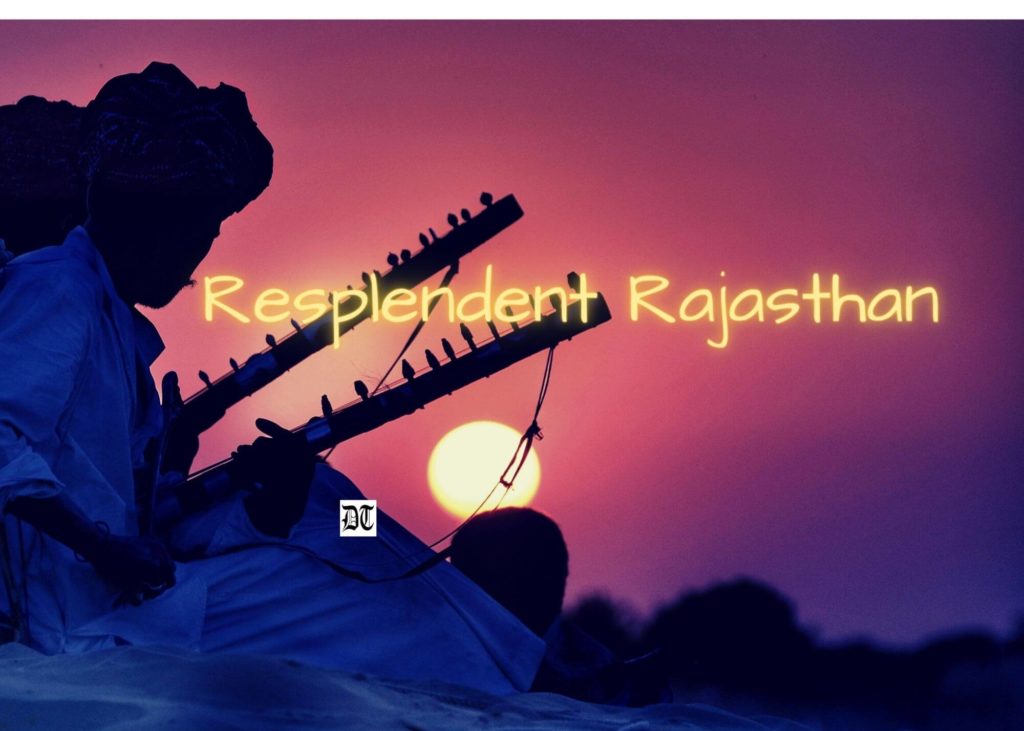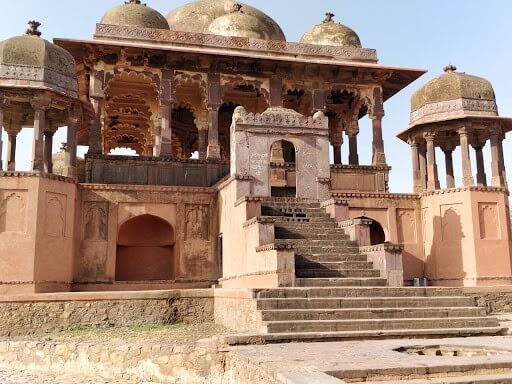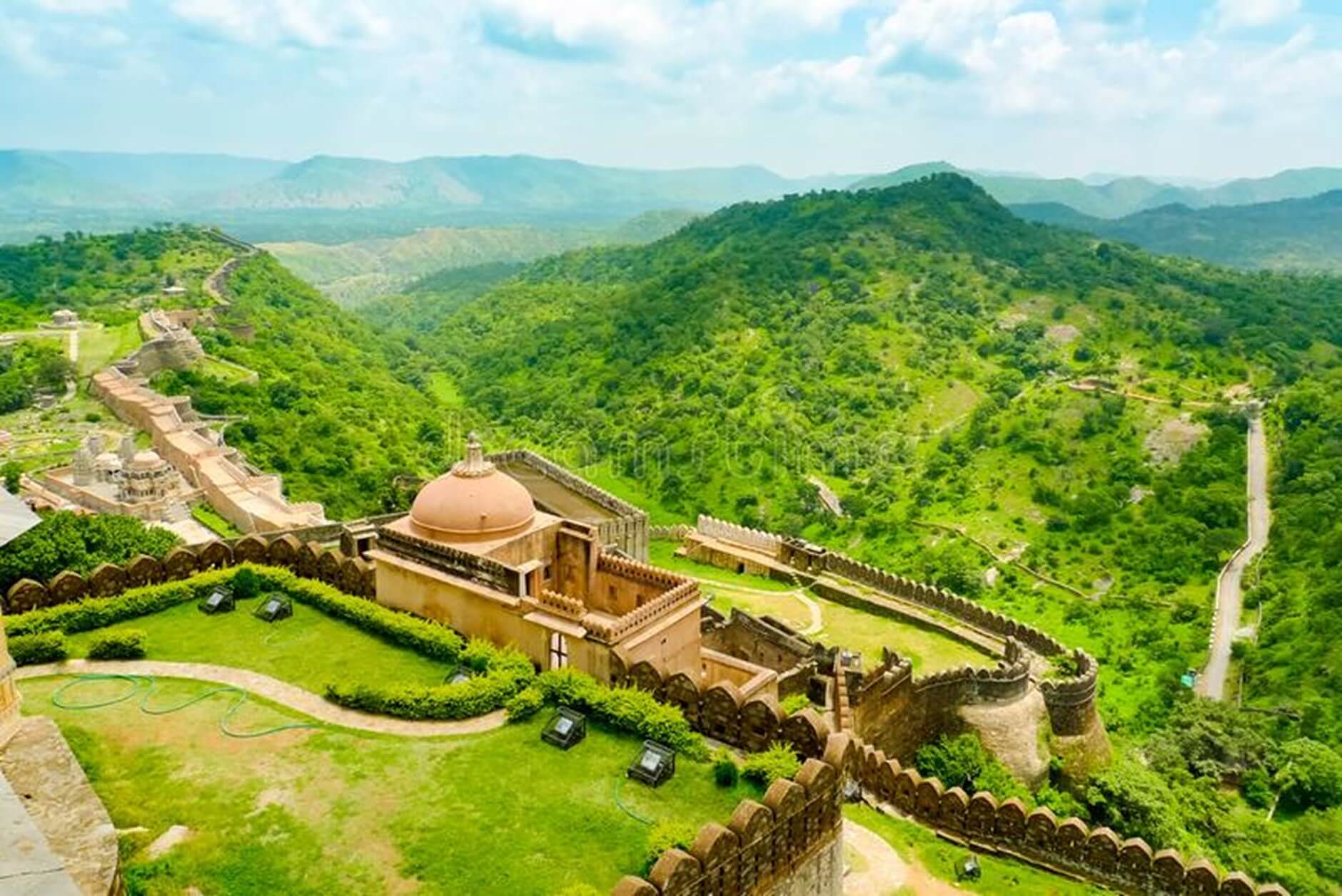Reading Time: 3 minutes
Dr. Parneet and Dr. Kiran tell us about the architectural splendours of the Hill Fort of Kumbhalgarh and the Ranthambore Fort, a hill and forest fort. An exclusive for Different Truths.

The Hill Fort at Kumbhalgarh is a massive fort built by Maharana Kumbha in the mid-15th century. The Maharana is credited with building as many as 32 forts and fortresses in Mewar during his long reign of nearly half-a-century. Being the birthplace of the valiant warrior Maharana Pratap, the Kumbhalgarh fort also has a unique significance. Prince Udai Singh grew up here when he was sent by his nursemaid, Panna for his safety from the rebel Banveer in Chittorgarh.
Placed 1,914 meters above the sea level, this colossal fort is encompassed by a 36 km long snake-like wall which is over 25 feet thick, on which eight horses can move together. Situated amidst a cluster of thirteen mountain peaks of the Aravalli range, the boundary wall of this fort stands as the second longest continuous wall in the world, next only to the Great Wall of China. Designed by the famous architect Mandan, the fort with its seven majestic gates and solid ramparts, rounded bastions and rising watch towers is one of the finest examples of defensive fortification in Rajasthan. The strategically designed entrance to the fort has sharp turns, congested staircases to slow down the enemy along with the eyeholes in the parapet which act as binoculars to have a watch over the approaching enemy. Hidden in the hills, Kumbhalgarh had remained unconquered because of its inaccessibility and hostile topography. It was taken only once in its history. Even then, it took the combined armies of the Mughal emperor, Akbar, and those of Amber and Marwar and a treacherous poisoning of its water supply to breach its defences.
…the boundary wall of this fort stands as the second longest continuous wall in the world, next only to the Great Wall of China.
Within the walls of this double-storeyed fort, there are many temples, palaces, gardens, and water-storage structures. The highest point of the fort is known as Badal Mahal. From the windows of this palace, it seems as if the clouds are flying right above the head, that’s why it is named Badal Mahal (the palace of clouds). This fort also has a fort within itself, which is called Katargarh.
Ranthambhore Fort is a blend of hill fort and forest fort, situated atop a 700 ft high hill. Ranthambhore National Park is one of the most popular tiger reserves in India. Its original name was ‘Ranastambha’ or ‘Ranastambhapur’ as it is situated on the Ran and the Thum or Stambh hills. Built by the Chauhan rulers in the 10th century, the fortifications around the fort run upto seven kilometres. The steps which lead up to it are wide and paved with stone.

There are several gateways in Ranthambore Fort that symbolise typical Rajasthani architecture.
There are several gateways in Ranthambore Fort that symbolise typical Rajasthani architecture. These gateways or ‘pols’ are named as Hathi Pol or elephant gate, ‘Bada Darwaza’ or big gate, ‘Mor Dwara’ or peacock gate, Ganesh Pol or Hindu elephant god gate, Suraj Pol or sun gate and Navlakha Pol or the nine-lakh gate. Each pol has a different dimension of its own. Like Kumbhalgarh, there is a Badal Mahal famous for its 84 -column hall, the conference hall of King Hammir Dev Chauhan. The fort has a complex called Hammir Kachahri or Hammir Court, an open court area where the acoustics are so designed that even the quietest whispers are converted to resounding echoes. Like other forts, there are divine shrines in the fort complex. The presence of Trinetra Ganesh Temple and a mosque with ‘Peer Saddrudeen ki Dargah’ together in the complex denotes the religious tolerance and munificence of the Rajput rulers. There are water reservoirs like lakes and ponds in the fort. Gupta Ganga is one of the magical water sources in the fort, which does not get dry even in the summers.
Caption: Ranthambore Fort, Destimap.com
Visuals sourced by the authors
Co-author

Dr Kiran Deep is Associate Professor in English at Sri Ganganagar (Rajasthan). Her English translation of eminent Punjabi poet Surjit Patar’s poems has been published by Sahitya Akademi. Her publications include the research book, “Mapping the Creative Terrain: Revisiting George Eliot and Thomas Hardy”, along with several articles in literary journals of national and international repute.













The article is super description of Giri Durg and Vana Durg as stated by Kautilya and other ancient Indian polity thinkers along with Mahabharat and other Smrity granth as. Kumbhalgarh and Ranathambhaur are two great and undefeated fort of Rajasthan having its splendour and architectural style. Thanks to the duo writers.
Enjoyed reading through. It was a journey
.a passage into the heart of a great world…Congratulations Dr Parneet and Dr Kiran. The description is lively as well as highly informative.